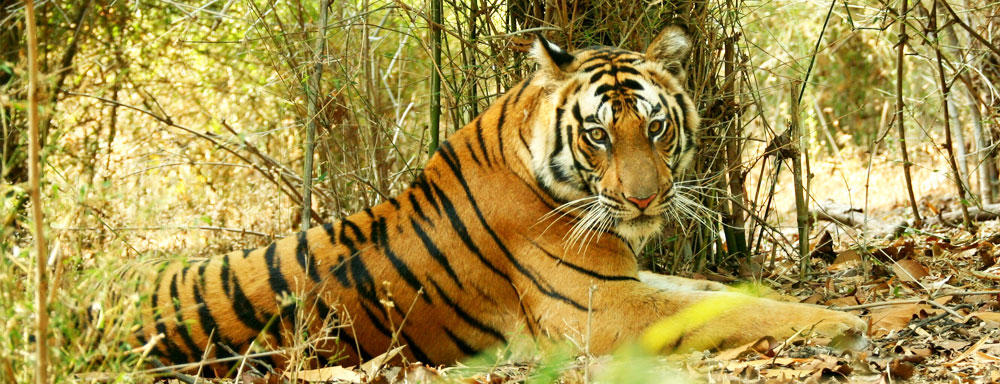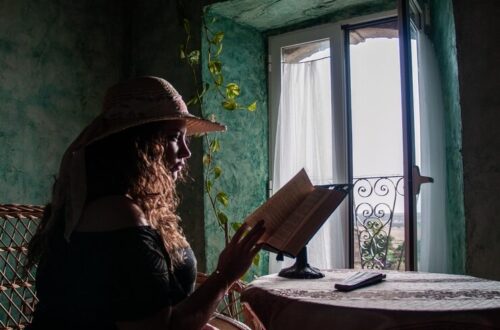Imagine walking through a forest just 20 minutes from Delhi’s bustling streets, where the rustle of leaves might reveal a leopard’s piercing eyes. That’s the reality at Asola Bhatti Wildlife Sanctuary, where leopards have made a remarkable comeback after decades of absence. I remember my first visit to a similar urban sanctuary, heart racing at the thought of a big cat nearby—it’s thrilling and humbling to know nature can thrive so close to a metropolis. Since 2020, Asola’s leopards have transitioned from transient visitors to permanent residents, with their population growing to 13–14 by 2025, a testament to dedicated conservation efforts. This article explores how Asola became a haven for leopards, the strategies behind this revival, and how you can engage with this urban wildlife success story.
The Return of Leopards to Asola Bhatti
Asola Bhatti Wildlife Sanctuary, nestled in Delhi’s Southern Ridge, has transformed from a degraded landscape into a thriving ecosystem hosting 13–14 leopards by 2025. Once scarred by mining pits and invasive species, the sanctuary now supports a robust prey base and lush flora, drawing leopards back after no sightings since 1940. This resurgence highlights the power of restoration in urban settings.
A Historical Absence
The Gazetteer of Delhi notes no leopard sightings in Asola since 1940, with the area suffering from deforestation and human encroachment. By 2019, pugmarks and scats signaled their return, confirmed by camera traps in 2021. This marked a turning point for the sanctuary’s ecological health.
Why Leopards Chose Asola
Leopards, adaptable predators, were drawn by improved habitats and abundant prey like nilgai and blackbuck. The lockdown in 2020 reduced human activity, allowing leopards to settle, with sightings near Neeli Jheel and mining pits. Conservation efforts like waterbody restoration sealed the deal.
- Key Species: Leopards, striped hyenas, nilgai, blackbuck, spotted deer.
- Habitat: Aravalli hills, semi-arid forests, restored waterbodies.
- Population: 13–14 leopards, including two cubs born in 2023.
| Species | Role in Ecosystem | Population Status |
|---|---|---|
| Leopard | Apex predator | 13–14 (2025 estimate) |
| Nilgai | Prey base | Increasing |
| Striped Hyena | Scavenger | Stable |
Conservation Efforts Behind the Revival
Asola’s transformation is no accident. The Delhi forest department, alongside the Bombay Natural History Society (BNHS) and Wildlife Institute of India (WII), implemented strategic restoration, from planting native species to installing camera traps. These efforts turned a barren landscape into a leopard-friendly urban refuge.
Habitat Restoration
Since 2015, the sanctuary has tackled invasive lantana and vilayati kikar, planting native trees to support herbivores. Check dams and waterholes now sustain wildlife year-round, with 45 new camera traps planned for 2025 to monitor leopards. These changes created a balanced ecosystem.
Reducing Human Intrusion
The Eco Task Force and boundary walls minimized trespassing, while restrictions on vehicles reduced disturbance. This allowed leopards to roam freely, with camera traps capturing them hunting near Bhatti Neeli Jheel, proving the sanctuary’s newfound safety.
Community Engagement
Education programs, inspired by Mumbai’s Sanjay Gandhi National Park, teach locals to coexist with leopards. A proposed nature information center aims to foster appreciation, reducing fear and human-wildlife conflict in nearby Sanjay Colony.
Pros of Conservation Efforts:
- Restored biodiversity
- Increased leopard population
- Boosted ecotourism potential
Cons:
- Risk of human-wildlife conflict
- High maintenance costs
- Requires ongoing community buy-in
The Role of Leopards as an Umbrella Species
Leopards are keystone species, their presence indicating a healthy ecosystem. At Asola, their population density of 4.5 per 100 km² surpasses Bandhavgarh (3.03) and Sariska (3.1), showing robust prey availability. Protecting leopards benefits species like spotted deer and jungle cats.
Ecological Impact
Leopards control herbivore populations, preventing overgrazing and supporting plant diversity. Their presence near human settlements, like Sanjay Colony, shows their adaptability, with camera traps revealing regular patrols along familiar tracks. This coexistence is a conservation win.
Comparison: Asola vs. Other Sanctuaries
Asola’s leopard density rivals top reserves, despite its urban proximity. Unlike Sariska, where tigers displace leopards, Asola’s focus on habitat restoration makes it a unique urban refuge. Its 32.71 km² range supports a dense, stable population.
| Sanctuary | Leopard Density (per 100 km²) | Key Feature |
|---|---|---|
| Asola Bhatti | 4.5 | Urban proximity, restored habitat |
| Bandhavgarh | 3.03 | Tiger-dominated, larger area |
| Sariska | 3.1 | Tiger recovery focus |
Featured Snippet Opportunity: Why are leopards important to Asola Bhatti? Leopards are keystone species, controlling prey populations and supporting biodiversity. Their presence at Asola Bhatti indicates a thriving ecosystem, benefiting species like nilgai and spotted deer.
Challenges of Urban Leopard Populations
While Asola’s leopards are a success story, their proximity to Delhi raises concerns. Human-wildlife conflict, like livestock attacks near Sanjay Colony, creates fear. The forest department is addressing this through education and conflict mitigation strategies.
Human-Wildlife Conflict
Leopards occasionally stray into urban areas, as seen in Najafgarh in 2021. Community fear persists, but Mumbai’s model of coexistence, with 26.3 leopards per 100 km², offers hope. Education is key to reducing panic and attacks.
Habitat Fragmentation
The Aravalli corridor, linking Sariska to Delhi, faces pressure from urbanization in Faridabad and Gurugram. Asola’s restoration counters this, but adjacent development threatens leopard movement. Protecting the corridor is critical for long-term survival.
Monitoring and Management
The WII’s 2025–2026 leopard census will refine population estimates, building on the 2021–2022 BNHS study. With 45 new camera traps, the forest department aims to track movements and prevent conflicts, ensuring Asola remains a safe haven.
- Challenges: Urban encroachment, conflict risks, funding needs.
- Solutions: Community education, corridor protection, enhanced monitoring.
- Tools: Camera traps, awareness campaigns, habitat restoration.
How to Visit Asola Bhatti Wildlife Sanctuary
Asola Bhatti, Delhi’s only wildlife sanctuary, is open to visitors, offering a chance to witness leopards and other species. Located near Tughlakabad, it’s a 20-minute drive from Greater Kailash II. Guided tours ensure safe, educational experiences.
Planning Your Visit
Book guided tours through the Delhi forest department’s website or platforms like Nature Tourism India. Early morning visits maximize wildlife sightings, with trails around Neeli Jheel offering the best leopard-spotting chances. Entry fees support conservation.
What to Expect
Expect rugged trails and diverse wildlife, including hyenas and nilgai. Binoculars and sturdy shoes are musts. Guided night tours, though rare, may reveal leopards, but safety protocols are strict to avoid disturbance.
Best Tools for Wildlife Watching
Use apps like eBird for birdwatching or iNaturalist to log sightings, contributing to conservation data. High-quality binoculars, like Nikon Monarch, enhance spotting leopards from a safe distance. Local guides provide expert insights.
- Book through: Delhi forest department or Nature Tourism India.
- Bring: Binoculars, comfortable shoes, insect repellent.
- Best time: October–March for cooler weather and active wildlife.
Supporting Asola’s Conservation Efforts
Your visit or support can bolster Asola’s success. Park fees fund restoration, while donations to NGOs like the Wildlife Conservation Society aid research. Community programs, like those proposed by Lynette Gomes, promote coexistence.
How to Contribute
Donate to the BNHS or WII for ongoing leopard studies. Volunteer for planting drives or awareness campaigns through WildTales Foundation. Avoid feeding wildlife or littering to maintain the sanctuary’s health.
Sustainable Practices
Choose eco-friendly operators for tours and avoid single-use plastics. Support policies protecting the Aravalli corridor by engaging with local conservation groups. Every small action helps sustain Asola’s ecosystem.
Pros of Supporting Conservation:
- Enhances leopard survival
- Boosts local biodiversity
- Promotes eco-tourism
Cons:
- Limited immediate impact
- Requires sustained effort
- Potential conflict risks
People Also Ask (PAA)
How many leopards are in Asola Bhatti Wildlife Sanctuary?
As of 2025, Asola Bhatti hosts 13–14 leopards, including two cubs, confirmed by camera traps and ongoing WII studies. This marks a 50% increase since 2022.
Why are leopards returning to Asola?
Improved habitats, abundant prey, and reduced human disturbance have made Asola a safe haven. Restoration efforts, like waterbody creation, attract leopards from the Aravalli corridor.
Can I visit Asola Bhatti to see leopards?
Yes, guided tours are available through the Delhi forest department. Early morning visits to Neeli Jheel offer the best chances, but sightings aren’t guaranteed due to leopards’ elusive nature.
What other animals live in Asola Bhatti?
The sanctuary hosts striped hyenas, jungle cats, nilgai, blackbuck, spotted deer, and Indian boars, all thriving due to habitat restoration and a healthy prey base.
How can I support Asola’s conservation?
Donate to NGOs like BNHS, volunteer for planting drives, or join awareness programs. Visiting the sanctuary and following eco-friendly practices also supports conservation efforts.
FAQ Section
What is Asola Bhatti Wildlife Sanctuary?
Asola Bhatti is Delhi’s only wildlife sanctuary, spanning 32.71 km² in the Aravalli hills. It’s a biodiversity hotspot hosting leopards, hyenas, and nilgai, revitalized through restoration.
How have leopards settled in Asola?
Restoration efforts, including native planting and water conservation, created a robust prey base. Reduced human activity and camera trap monitoring confirmed leopards as permanent residents.
Are leopards in Asola dangerous to humans?
Leopards are elusive and rarely attack humans, but conflicts occur near Sanjay Colony. Education and mitigation strategies, like those in Mumbai, aim to ensure safe coexistence.
What are the best tools for visiting Asola?
Use apps like iNaturalist for species tracking and binoculars like Nikon Monarch for spotting wildlife. Guided tours via the Delhi forest department enhance safety and education.
How can I help protect Asola’s leopards?
Support NGOs like BNHS, join planting drives, or advocate for Aravalli corridor protection. Eco-friendly tourism and avoiding wildlife disturbance contribute to long-term conservation.
Conclusion: Asola’s Leopards, A Beacon of Hope
Asola Bhatti’s leopards are a testament to what’s possible when conservation meets determination. I can’t shake the awe of knowing these majestic cats roam just beyond Delhi’s skyline, a quiet rebellion against urban sprawl. By visiting responsibly, supporting NGOs like BNHS or Wildlife Conservation Society, and advocating for the Aravalli corridor, you can help ensure their future. Book a tour through Delhi Forest Department or explore resources at WildTales Foundation. Asola’s revival shows nature can reclaim its space—let’s keep it that way.





